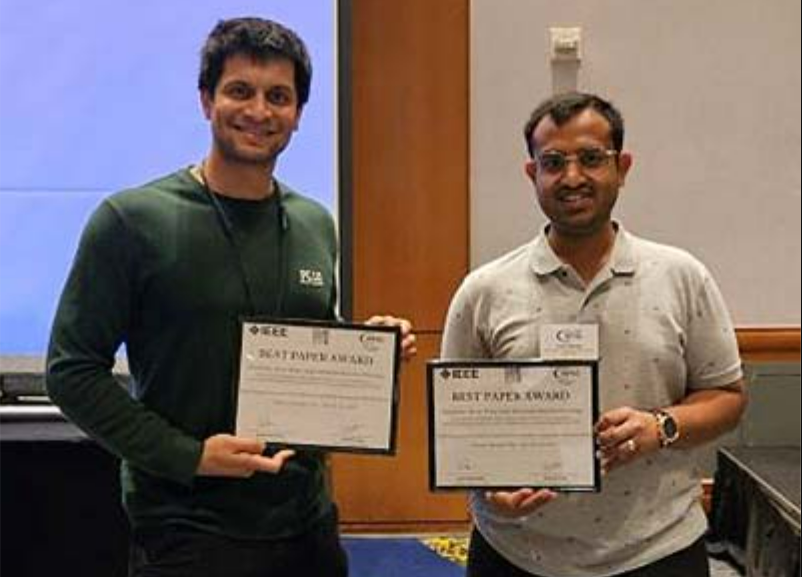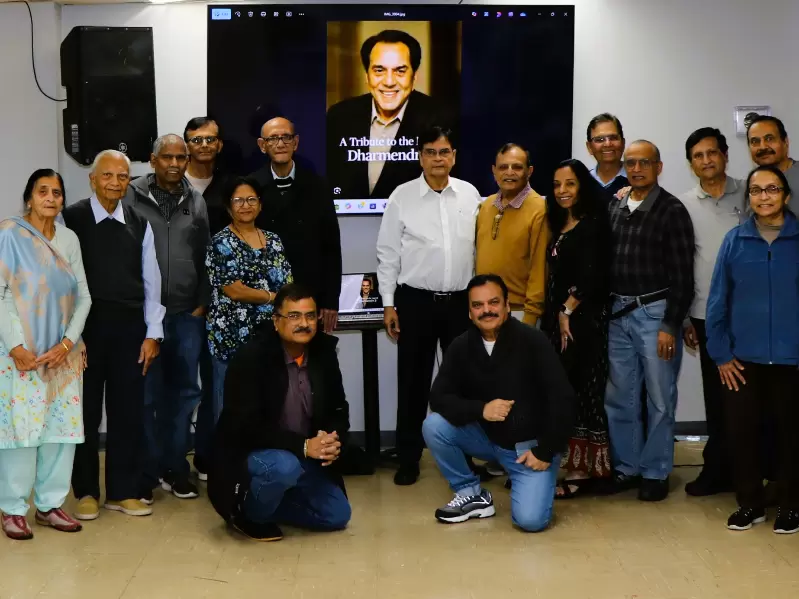Indian-origin researchers develop battery-free smart sensors
The innovation was recently awarded Best Paper at the 2025 IEEE RFID Conference.
 Nagarjun Bhat (L) and Ishan Bansal (R), two of the co-authors of the award-winning paper on SenSync, the software-based innovation that recently earned the Best Paper Award at the 2025 IEEE RFID Conference, pose with their award. / UC San Diego
Nagarjun Bhat (L) and Ishan Bansal (R), two of the co-authors of the award-winning paper on SenSync, the software-based innovation that recently earned the Best Paper Award at the 2025 IEEE RFID Conference, pose with their award. / UC San Diego
A team of Indian-origin researchers at the University of California (UC), San Diego has developed SenSync, an innovative technology that transforms traditional RFID tags into real-time, battery-free sensors.
RFID—short for Radio Frequency Identification—is commonly used for tracking inventory in warehouses and retail stores. These tags are small, wireless, and mostly battery-operated, typically just helping identify objects. But SenSync takes this a step further.
Also read: New technology to reduce motion sickness
Led by master's student Ishan Bansal and PhD researcher Nagarjun Bhat, under the guidance of professor Dinesh Bharadia at UC San Diego’s Jacobs School of Engineering, the project reimagines how RFID tags can be used—not just to track, but also to sense environmental changes such as temperature, pressure, and moisture. Their research is supported by the Center for Wireless Communications and the Qualcomm Institute.
What sets SenSync apart is its ability to function without any batteries, wires, or calibration, while delivering up to 500 sensor readings per second with highly accurate results. This is made possible through an advanced algorithm, based on Dynamic Time Warping (DTW), that syncs and interprets data from multiple tags in real time.
"To empower our physical spaces with AI, you would need sensors and sensing. SenSync is truly an innovation that can provide that battery-free sensing and do so with extremely low power usage and no wires,” Bharadia said.
According to the research team, SenSync offers a scalable and sustainable solution applicable across sectors such as warehouse automation, agriculture, healthcare, and robotics. With its minimal energy requirements and compatibility with existing infrastructure, it has the potential to serve as a foundational technology for enabling physical AI in real-world environments.
ADVERTISEMENT
ADVERTISEMENT
E Paper
Video



 Bhavana P
Bhavana P












Comments
Start the conversation
Become a member of New India Abroad to start commenting.
Sign Up Now
Already have an account? Login